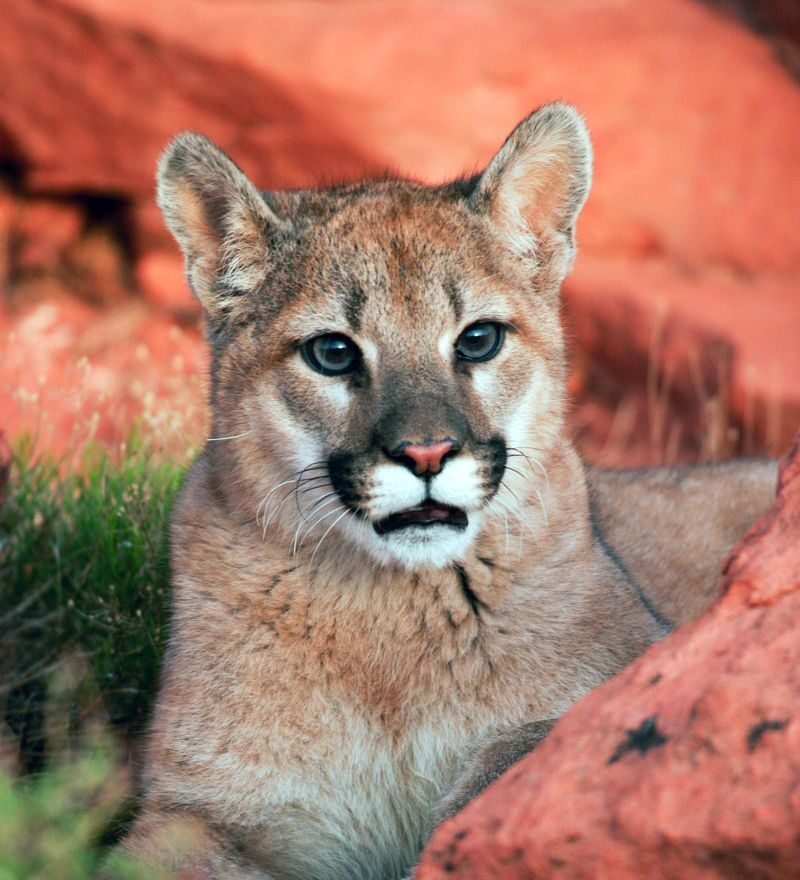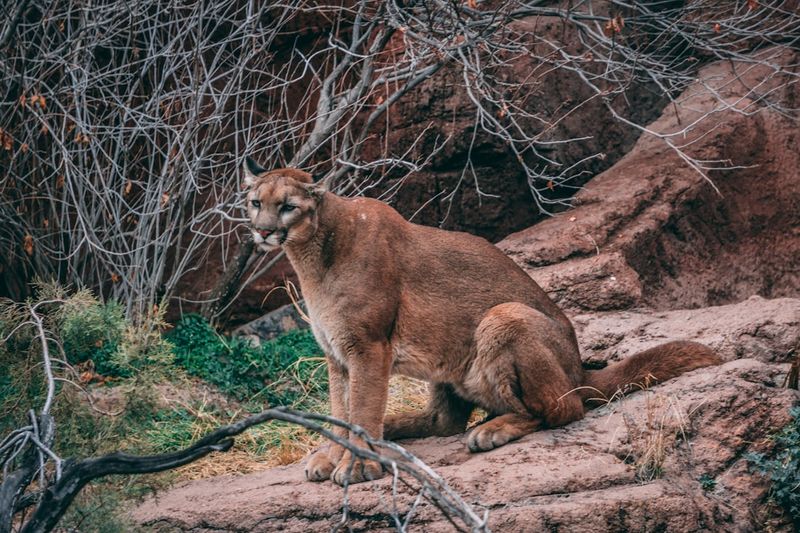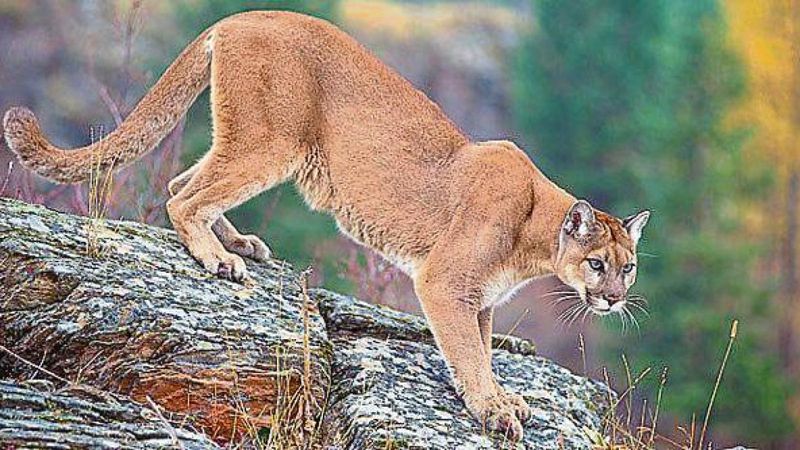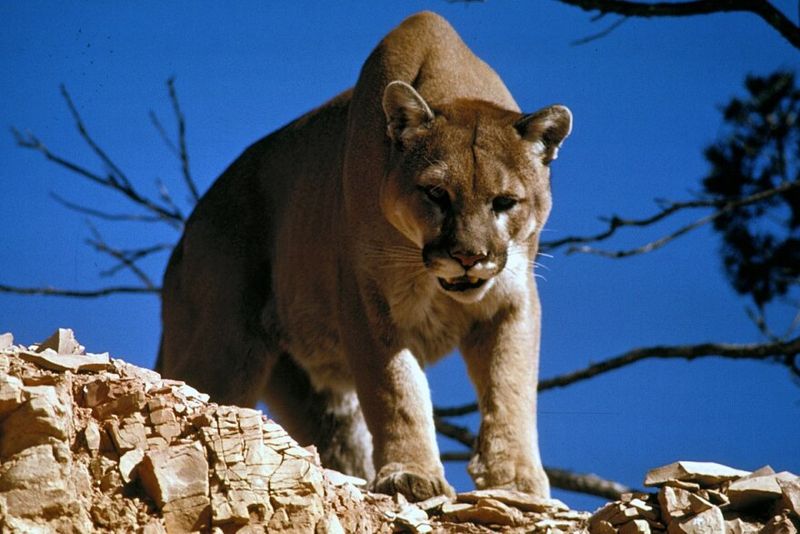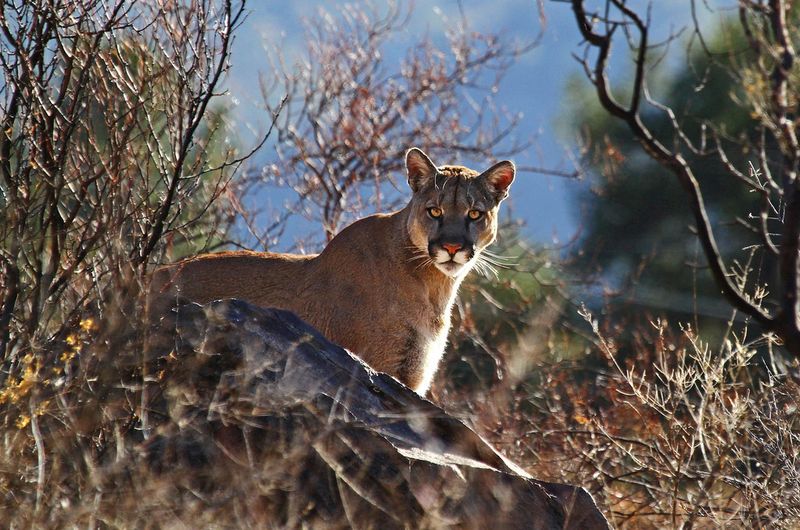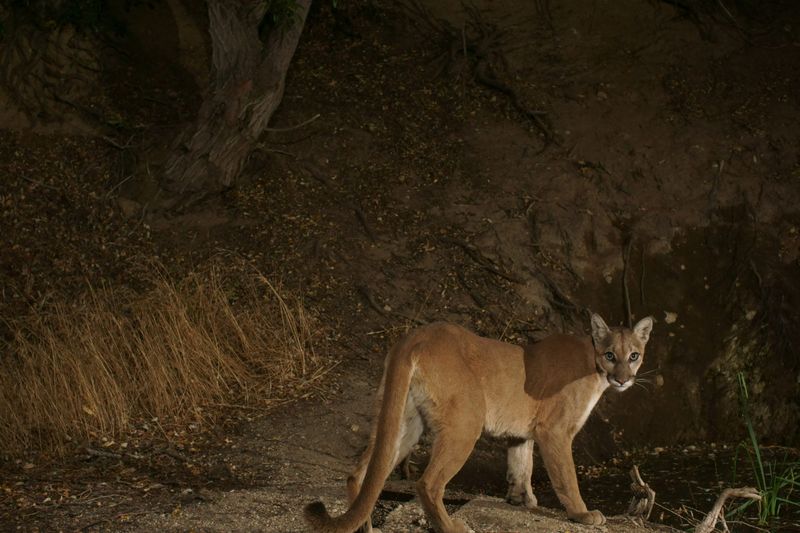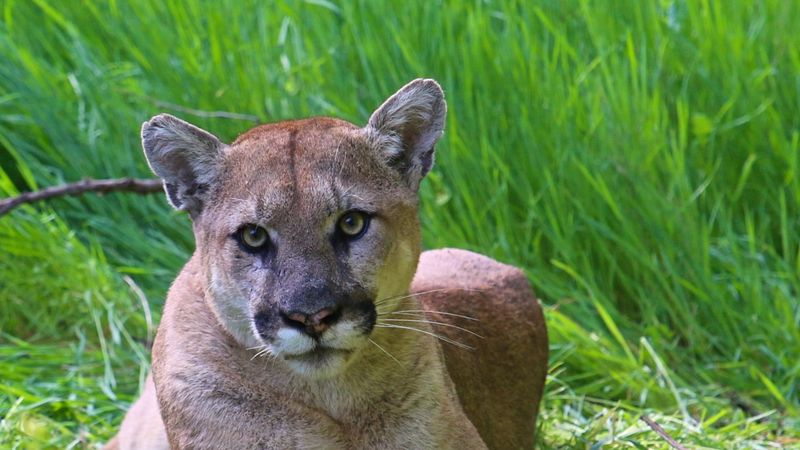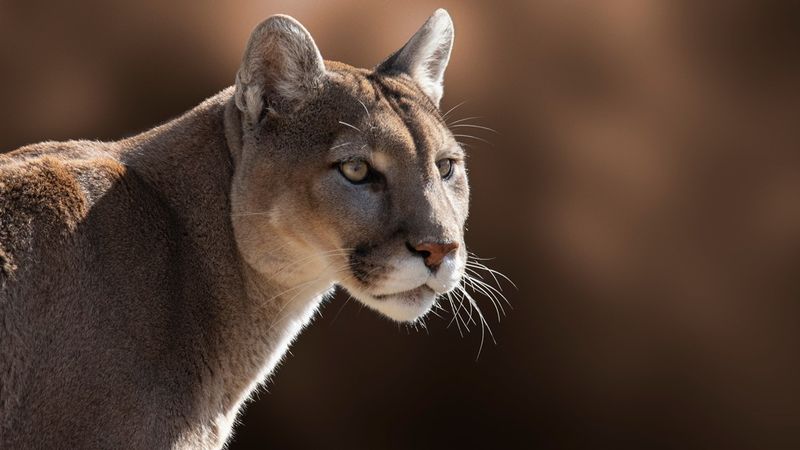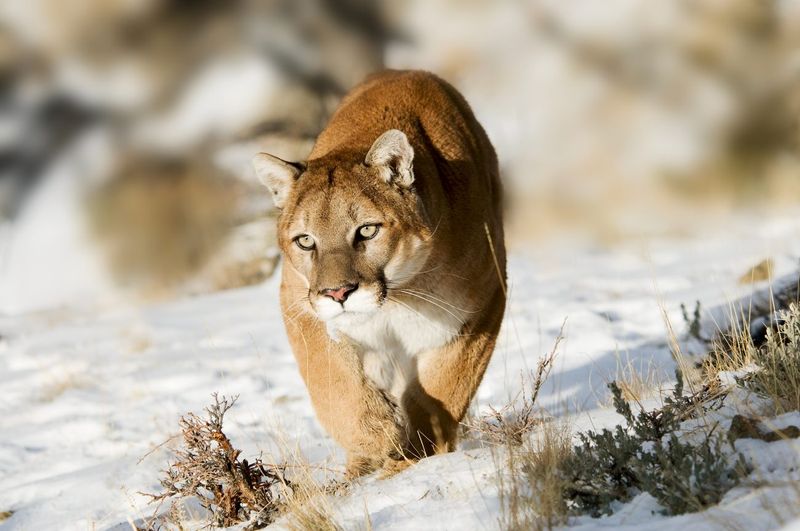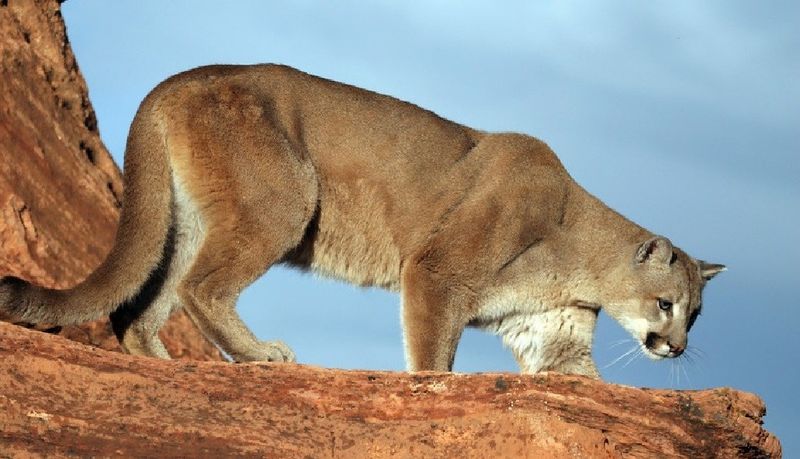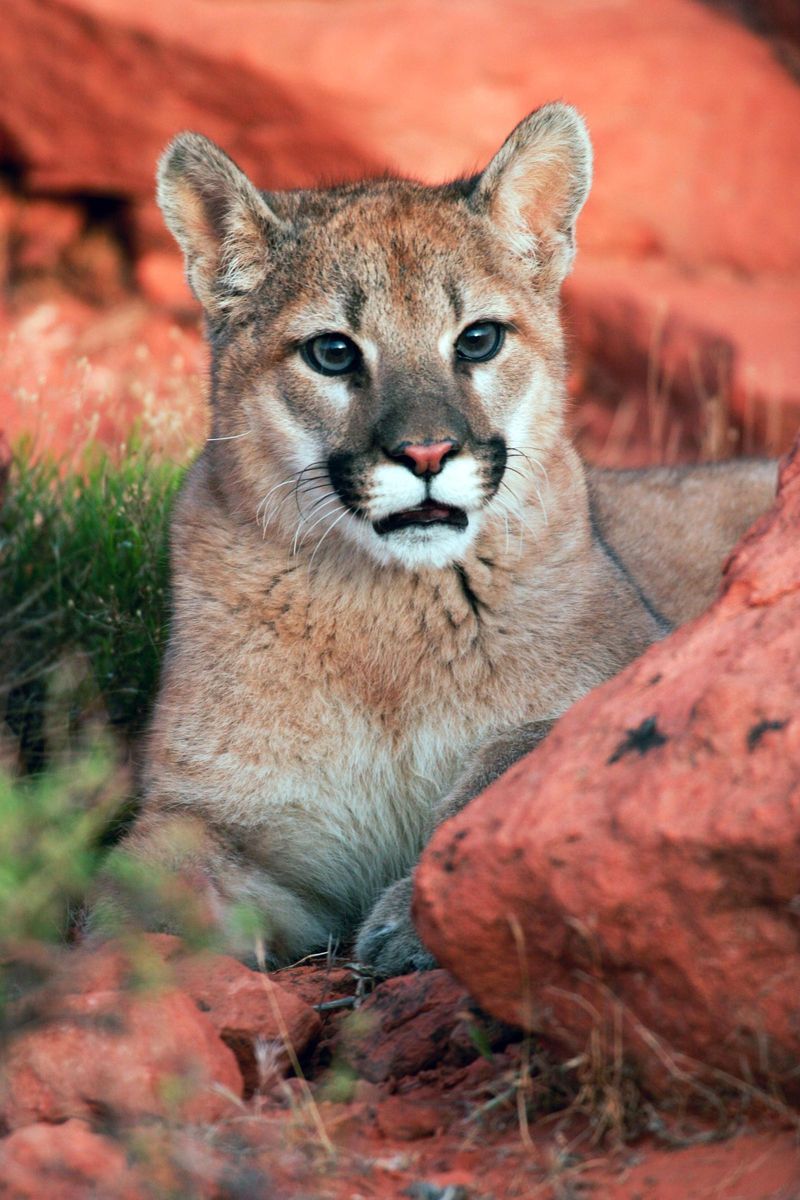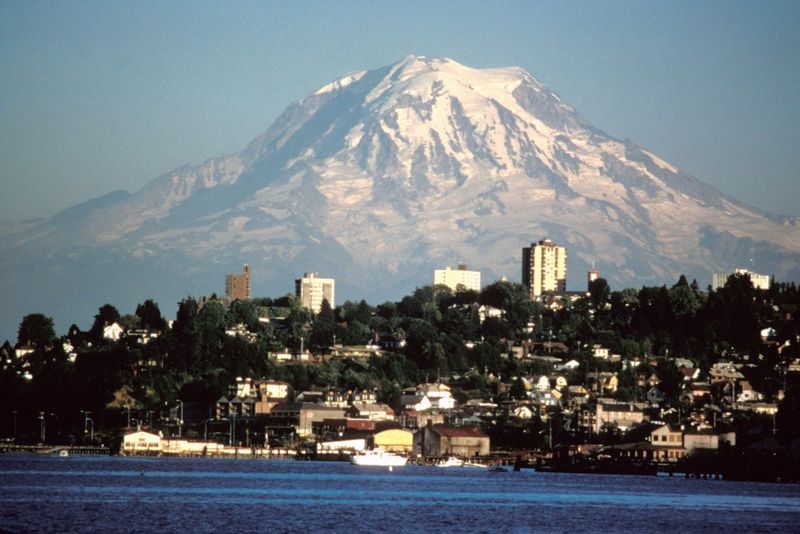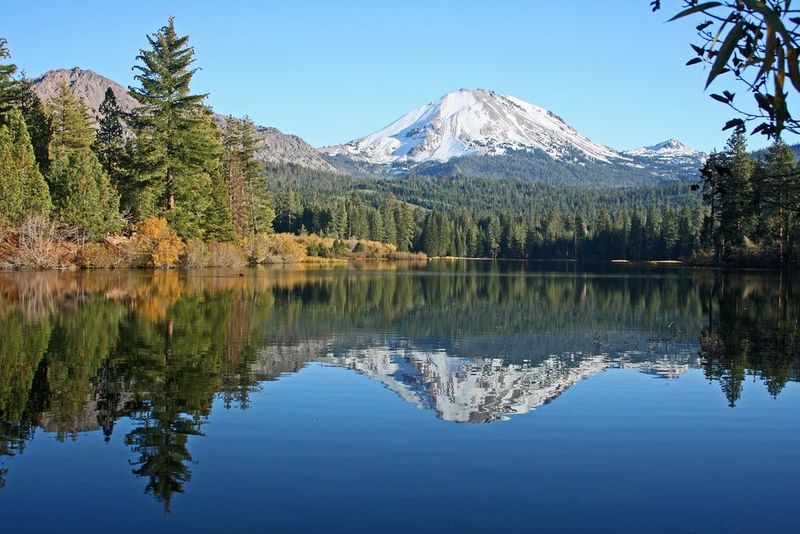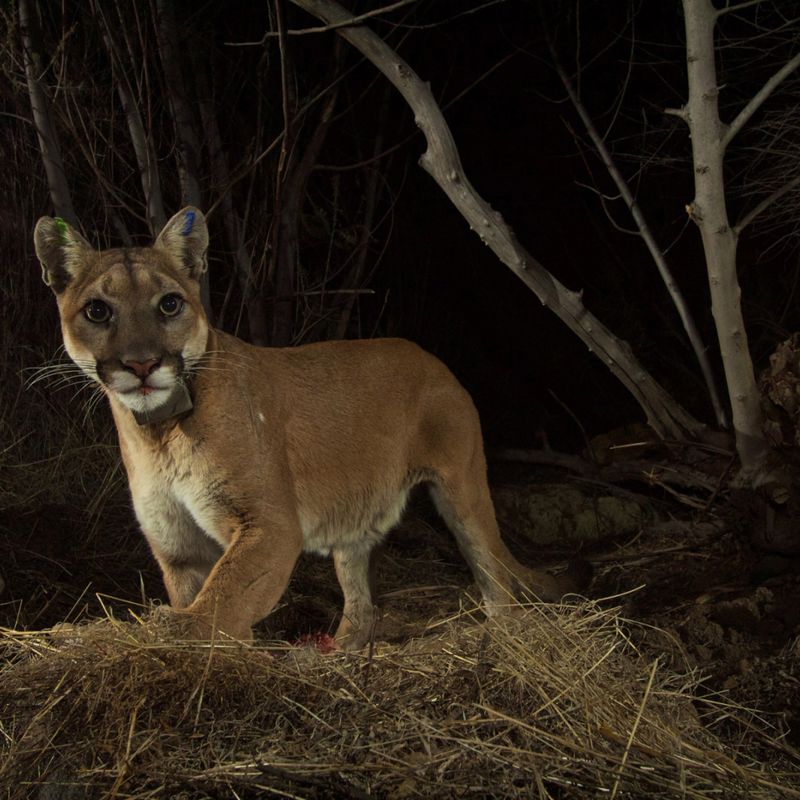📖 Table of Content:
- 1. Yellowstone National Park (Wyoming, Montana, Idaho)
- 2. Rocky Mountain National Park (Colorado)
- 3. Glacier National Park (Montana)
- 4. Big Bend National Park (Texas)
- 5. Yosemite National Park (California)
- 6. Sequoia & Kings Canyon National Parks (California)
- 7. Olympic National Park (Washington)
- 8. North Cascades National Park (Washington)
- 9. Grand Canyon National Park (Arizona)
- 10. Bryce Canyon National Park (Utah)
- 11. Mount Rainier National Park (Washington)
- 12. Lassen Volcanic National Park (California)
- 13. Mojave National Preserve (California)
The allure of spotting a wild cougar in its natural habitat captivates many wildlife enthusiasts. These elusive predators, known by various names such as mountain lions, pumas, or panthers, are solitary and primarily nocturnal, making sightings a rare and exhilarating experience. Their presence across diverse terrains in the U.S. adds an element of mystery and excitement to any outdoor adventure.
Cougars are adaptable creatures, inhabiting a range of environments from dense forests to arid deserts. Their stealth and keen senses allow them to thrive in areas with abundant prey and minimal human disturbance. While they tend to avoid human interaction, understanding their habitats and behaviors can enhance the chances of observing these majestic animals in the wild.
For those eager to catch a glimpse of a wild cougar, certain U.S. national parks offer higher probabilities due to their suitable habitats and prey availability. Below is a detailed overview of 13 national parks where the likelihood of encountering a cougar is notably higher.
1. Yellowstone National Park (Wyoming, Montana, Idaho)
Yellowstone’s expansive wilderness provides an ideal environment for cougars, offering ample prey and secluded areas. While sightings are rare due to their secretive nature, the park’s diverse ecosystems support a stable cougar population. Visitors exploring less-traveled trails during dawn or dusk may increase their chances of an encounter. The park’s commitment to preserving natural habitats ensures that cougars continue to thrive in this iconic landscape. Educational programs and ranger-led tours often provide insights into the behaviors and habitats of these elusive cats. It’s essential for visitors to remain vigilant and respect wildlife boundaries to ensure safety for both humans and animals. Reporting any sightings to park authorities contributes to ongoing conservation efforts.
2. Rocky Mountain National Park (Colorado)
Nestled in the heart of Colorado, Rocky Mountain National Park boasts rugged terrains and dense forests, creating a haven for cougars. These predators prefer areas with abundant deer populations, which are prevalent throughout the park. Although direct sightings are uncommon, signs such as tracks or scat may indicate their presence. Hikers venturing into remote areas during early morning or late evening hours stand a better chance of observing these animals. The park emphasizes the importance of staying on designated trails and maintaining awareness of one’s surroundings. Educational materials and visitor centers offer information on safely coexisting with wildlife. Engaging with park resources enhances the overall experience and understanding of the ecosystem.
3. Glacier National Park (Montana)
Glacier National Park’s pristine landscapes and diverse habitats make it a suitable environment for cougars. The park’s remote areas, characterized by dense forests and mountainous regions, provide the seclusion these animals favor. While the exact population is unknown, cougars are considered one of the top predators in the park. Visitors are advised to hike in groups and make noise to avoid surprising wildlife. Educational signage throughout the park offers guidance on recognizing signs of cougar activity. Participating in ranger-led programs can provide deeper insights into the behaviors and roles of predators in the ecosystem. Respecting wildlife and adhering to park guidelines ensures a safe and enriching experience for all.
4. Big Bend National Park (Texas)
Big Bend’s vast desert landscapes and rugged mountains create an ideal setting for cougars. The park reports over 150 mountain lion sightings annually, indicating a significant presence. Encounters often occur along roadways and trails, especially in the Chisos Mountains region. Visitors are encouraged to remain alert and avoid hiking alone, particularly during dawn and dusk. The park provides resources on wildlife safety and encourages reporting any sightings to rangers. Understanding the behaviors and habitats of cougars enhances the appreciation of the park’s biodiversity. Engaging with educational programs can deepen knowledge and promote conservation efforts.
5. Yosemite National Park (California)
A study conducted in 2003 estimated one mountain lion per 25 square miles within the park’s boundaries. While sightings are infrequent, the presence of these predators underscores the park’s ecological richness. Visitors are advised to remain vigilant, especially in less-populated areas during early morning or evening hours. Educational programs and visitor centers offer information on safely coexisting with wildlife. Respecting natural habitats and adhering to park guidelines ensures a harmonious experience for both humans and animals. Reporting any sightings contributes to ongoing research and conservation initiatives.
6. Sequoia & Kings Canyon National Parks (California)
The towering forests and rugged terrains of Sequoia and Kings Canyon provide a secluded habitat for cougars. These parks’ varied elevations and abundant prey make them suitable environments for these elusive predators. While sightings are rare, visitors should exercise caution and be aware of their surroundings. The parks emphasize the importance of not approaching wildlife and provide guidelines for safely navigating cougar habitats. Educational materials and ranger-led programs offer insights into the behaviors and roles of predators in the ecosystem. Engaging with these resources enhances the overall visitor experience and promotes conservation awareness. Adhering to park regulations ensures safety and preserves the natural integrity of these protected areas.
7. Olympic National Park (Washington)
Olympic National Park’s diverse landscapes, from coastal regions to alpine forests, create a rich habitat for cougars. These predators prefer areas with dense underbrush and rocky terrains for stalking prey. While the cougar population is uncertain, evidence confirms their existence within the park. Visitors are advised to hike in groups and keep children close, especially in remote areas. Educational signage and visitor centers provide information on recognizing signs of cougar activity. Participating in ranger-led programs can offer deeper understanding of the park’s wildlife dynamics. Respecting wildlife and adhering to safety guidelines ensures a secure and enriching experience.
8. North Cascades National Park (Washington)
In the remote reaches of North Cascades National Park, the rugged wilderness offers a prime habitat for cougars. These felines navigate the steep inclines and dense forests with a mastery that speaks to their adaptability. While elusive, the presence of cougars is a testament to the park’s thriving ecosystem. As you hike through this untouched landscape, the possibility of a sudden encounter adds a sense of awe to your journey. Picture a cougar’s silent vigil, eyes watchful from a hidden perch, as you explore one of nature’s most pristine settings.
9. Grand Canyon National Park (Arizona)
The sheer vastness of the Grand Canyon provides an unexpected yet fitting home for cougars. These solitary hunters are part of the canyon’s intricate ecosystem, moving through its remote sections with grace. Imagine the excitement of spotting a cougar, its silhouette striking against the canyon’s vibrant hues. The thrill of such an encounter is matched only by the breathtaking views that surround you. As day turns to night, the canyon’s silence is alive with the possibility of these majestic creatures. Each visit to the Grand Canyon is a chance to immerse yourself in its timeless beauty and untamed wilderness.
10. Bryce Canyon National Park (Utah)
Bryce Canyon’s striking geological formations and forested areas offer a surprising yet suitable setting for cougars. These stealthy predators blend seamlessly with the rugged landscape, their presence an integral part of the park’s diverse wildlife. The hoodoos stand like sentinels as you wander the trails, each turn a potential glimpse into the secret world of cougars. Imagine the thrill of sighting one, its form weaving through the shadows as the first light of dawn breaks over the canyon. Bryce Canyon invites you to embrace its wild side, where nature’s mysteries await discovery.
11. Mount Rainier National Park (Washington)
Mount Rainier National Park’s diverse landscapes, from dense forests to sweeping alpine meadows, provide a rich tapestry for cougars to inhabit. These big cats are seldom seen, yet their presence is a reminder of the park’s untamed heart. As you explore the trails, keep attuned to the subtle signs of wildlife, for a cougar might be watching from a hidden vantage point. Picture the mystique of encountering a cougar, its form a fleeting shadow across your path. The magic of Mount Rainier lies in its blend of beauty and wildness, where every step is an adventure waiting to unfold.
12. Lassen Volcanic National Park (California)
With its remote and rugged terrain, the park offers a haven for cougars. Among the volcanic landscapes, these elusive felines slip through the shadows, their presence felt rather than seen. Picture yourself hiking through this dramatic scenery, each step a connection to the wild world around you. As dusk settles, the chances of seeing a cougar increase, its silhouette a ghostly presence against the fiery hues of the setting sun. Lassen’s wild beauty is a testament to nature’s resilience and the enduring mystery of its inhabitants.
13. Mojave National Preserve (California)
In the expansive desert landscapes of Mojave National Preserve, cougars find a unique and challenging environment to thrive. These stealthy cats navigate the harsh terrain, their presence a testament to their adaptability. Imagine walking through the preserve, the sun casting long shadows across the rocky outcrops, when a sudden movement catches your eye – a cougar, master of its domain. The stillness of the desert is punctuated by the quiet power of these creatures, offering a rare glimpse into their secretive lives. Mojave is a place where the beauty of the land and its wildlife come together in perfect harmony.
